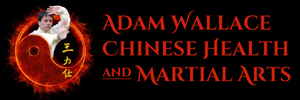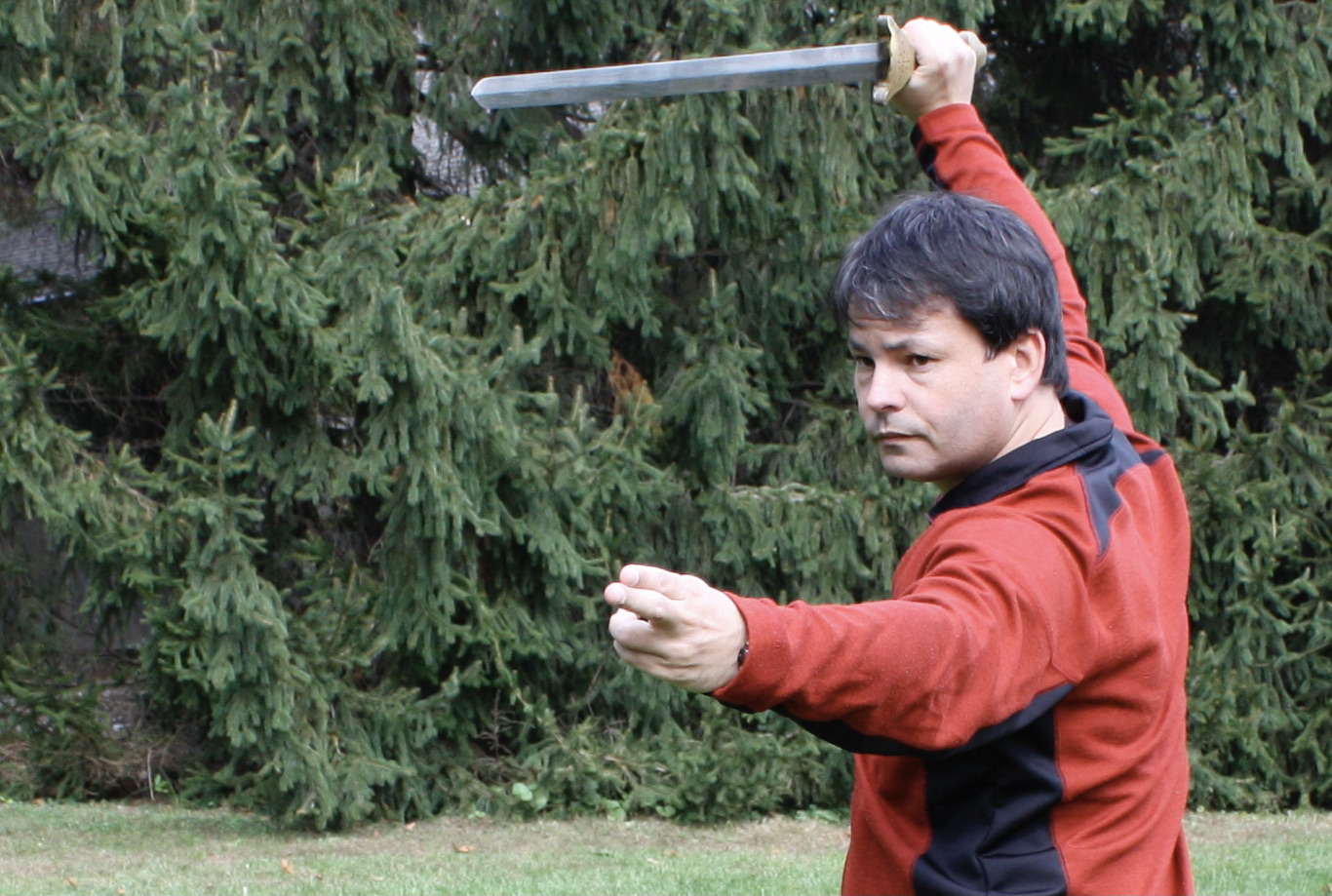True success in any endeavor demands not only possessing a genuine passion for it, but also a clear understanding of the subject, and a focused mind and direction. This is true for Qigong and martial arts, but in today’s world students face so many more distractions, than in the past, that result in confused thinking. This is, in so small part, due to the diversity and complexity of readily accessible material (accurate and erroneous information) available on the World Wide Web, in addition to lacking clear instruction.
Curiosity is a wondrous and essential human quality – without it we would not have all our advancements in the fields of science and technology, but, it can be like a double-edged sword, for it is also said, “Curiosity killed the cat”. Like all adages, this is based upon truth from experience. YouTube provides an open source of video content from the highest levels to the rankest amateurs. One problem with perusing the myriad videos is that this leads to constant comparisons, and the more we observe the more variations and discrepancies we begin to notice, even within the very same lineage! This can result in confusion and doubts about what we are currently learning. Is our teacher teaching us the real skill? Is his/ her version right or wrong? Is he good enough or knowledgeable enough? Part of the problem here lies in not possessing the wisdom and judgement to be able to tell the difference between the good and the more prevalent bad that proliferates the net. Not many consider that even the very same master’s form will change over time, as his skill improves, and his body changes as he ages. I personally witnessed a number of highly skilled Chen Taijiquan masters and elders demonstrating in Chen Village, one after another, and they were all very different. It was clear they were practicing Taijiquan, but the way they expressed the form differed, despite them being from the very same clan and locale. Movement is human expression, just like handwriting, and varies according to body type, and personality/ energy. Human beings are organic, and not machines or carbon copies. Is everyone’s handwriting the same? No, but if it is legible then it is correct. In the case of Chinese health and martial arts, the student’s form should certainly resemble that of the teacher’s, but more important than being identical is that the principles are upheld.
In ancient times, before technology existed, and before many of these skills became disseminated throughout the world (and generally diluted!), students happily remained with the one Sifu by whom they were fortunate enough to be accepted. They were never in any great rush to complete studies and were not concerned with what other skills they could be learning simultaneously, or instead, and had no need to seek knowledge from alternative sources. With no such distractions, their minds were clear and hearts content, freeing them to simply focus on their studies and their practice, to acquire an invaluable skill for life. One solitary path is all that is needed to reach the top of the mountain. Choosing different paths means going around in circles, at base camp, instead of ascending to the summit. Some people think that the more teachers they can find to study with the more knowledge they can accrue. In reality, this can result in ‘Chop-Suey’ – a mishmash, or confused amalgam. It takes time to compete a system so those that chop and change get a little here and a little there, and never complete the puzzle. So, they join internet forums, to connect with others, in order to share and gain information, in the hope of acquiring more pieces of the puzzle, but most masters do not have the time or inclination to join forums, so the blind are leading the blind. As they say, “A little knowledge is a dangerous thing!”.
A lot of people are attracted to Qigong masters that exhibit psychic abilities, such as pyrokinesis, using their Qi to illuminate light bulbs in their hands, or causing assailants (always their own students!) to be repelled, lifted airborne by an unseen force, or to writhe involuntarily on the floor, all with absence of touch. However, the majority of these (though not all!) are charlatans, using trickery, and collusion. A clear mind can see the truth, while the confused mind falls for it, hook-line-and-sinker. The true aim of Qigong lies in health, healing, and longevity, and develops vitality, relaxation, wisdom, compassion, and character. When true health is fostered, our natural ‘human potential’, including ESP, can be developed, in addition, but health should come first, and anything else can be considered a ‘bonus’. If we follow this, we cannot go wrong. But, when psychic abilities (or other goals) become the main goal, health and everything else is neglected and remains undeveloped. For me, a person with a good heart, that is true and sincere, loyal, compassionate, empathetic, gentle, generous, and humble, is rarer, more ‘special’ and ‘magical’, more valuable to improving the human condition, and therefore more impressive than all of these ‘mysterious’ people with their feats and parlor tricks. A friend used to treat a ‘Chaos magician’ for long-term back pain. This gentleman, apparently, could use his ‘magic’ to change the weather and burst clouds. But, he couldn’t fix his own back! Qigong self-healing is more magical and its uses are far more practical!
Is is amazing how many Tai Chi Chuan practitioners, I have spoken with, that are confused over the very meaning of Tai Chi. They believe it has something to do with ‘energy’. In actuality, the Chinese character of ‘Chi’ in Tai Chi is not the same character ‘Chi’, which is energy, in Chi Kung. In Tai Chi, the character ‘Chi’ means ‘limited’ or ‘ending’, as in ‘finite’. Confusion may be due to the Wade-Gilles romanization system for Mandarin, as they appear to be the same. Pinyin romanization helps clarify this, as the ‘Chi’ (of Tai Chi) is written ‘Ji’, so we have Taiji and Taijiquan instead, and ‘Chi’ (of Chi Kung) is written ‘Qi’, so we have Qigong. Clearly, no teacher explained the correct definition to those that are confused, but possibly their teacher did not know either, and is a product of the same confused thinking. Chen Xin (1849-1929), 16th generation patriarch of the Chen family, stated, “Taiijquan is spiral force. If you don’t know spiral force, you don’t know Taijiquan”. How clear, succinct, and simply stated! But, how many of the millions of Taijiquan practitioners worldwide really know this, and can manifest spiral force? Truth be told, relatively very few indeed! As an experiment, try asking some. This only serves to highlight that the majority of those practicing Taijiquan in the world possess more confusion than clarity.
In the case of Wing Chun Kungfu, many are impressed by teachers with the fastest hands, able to strike (their own students!) ten or more times in a matter of seconds. If we have to hit a solitary opponent that many times how powerful is our punch, and if we don’t, then what is the point? Wing Chun is not just about speed or strength alone, for as we become older we cannot rely solely on these attributes. The real skill is about sensitivity and positioning (footwork) and controlling an opponent using minimal force and not maximum, knowing when is sufficient, and when to stop. When handwork, used to defend and counter against a simple attack, becomes overly elaborate, using multiple combinations of techniques, then this goes against the very principle of Wing Chun, which is “Simple and Direct”. Yet, those with low-level understanding are left in complete awe by these demonstrations. In most cases, the ‘fast hand merchants’ seldom display fast, light footwork (which is more impressive). The human brain seems hardwired to favor the complex and disregard the simple, which accounts for why those that exhibit the most convoluted methods are lauded. Regarding the Wooden Dummy (Wing Chun’s unique training tool), certain teachers like to strike the dummy so hard that the arms break off the body. Yet again, those with low-level understanding are duly impressed, but like Bruce Lee said, “Boards don’t hit back”, the same can be said about wooden dummies! The correct way to use this tool is to develop precision of footwork, hand position and distance. The harder someone beats the dummy the less they really understand, showing a lower level of skill. Some students are actually taught that the dummy is for conditioning the arms, palms, and knuckles. If so, then toughening the body in this manner would lead to dullness of the skin’s surface, so the sensitivity that is such an important cornerstone to good Wing Chun skill would be sacrificed in the process.
Many years ago now, a friend urged me to check an on-line internal martial arts forum that he favored, and emailed me all the posts from that evening, eagerly awaiting the verdict. There were hundreds to sift through, and all, without exception, either offered no new perspective on subjects in which I was already very familiar, or else seemed grossly erroneous, contrary to the principles I had been taught, or had discovered as truth through experience. Overall, there just seemed to be a whole lot of confusion, muddled thinking, and misleading information on display. After alternating between perusing and skimming ad nauseum, with no perceptible benefit, or point, in sight my level of discomfort and distaste grew, but, by that time, I realized I had just completely wasted well over an hour and half of my life that I could never get back! This led me to conclude, at the time, that if every single person on this particular forum, and others like it, as well as those spending hours-on-end watching Youtube clips, were to find one good teacher, develop that relationship, and find the inspiration to practice every day, instead of sitting on their chairs, in front of screens, becoming stiffer, flabbier, and heavier, giving themselves Carpal Tunnel Syndrome, eyestrain, and backache, they could all become genuinely skilled masters! And then, the standard of Qigong and internal martial arts, in general, would rise as there would be more good practitioners to lend greater clarity and understanding, and dispel all the confusion.
– Adam Wallace

